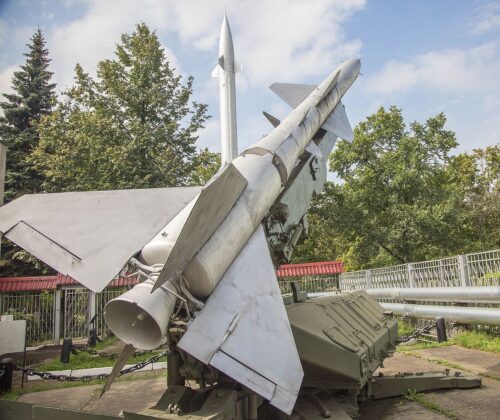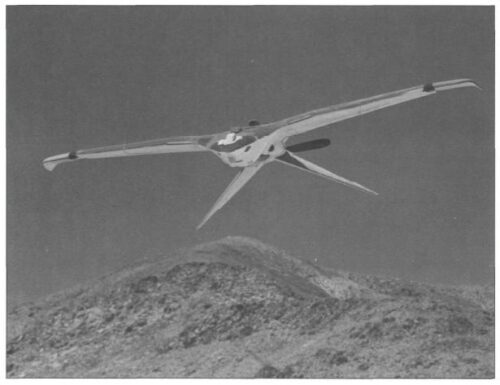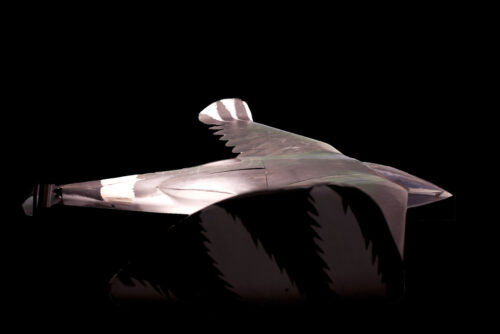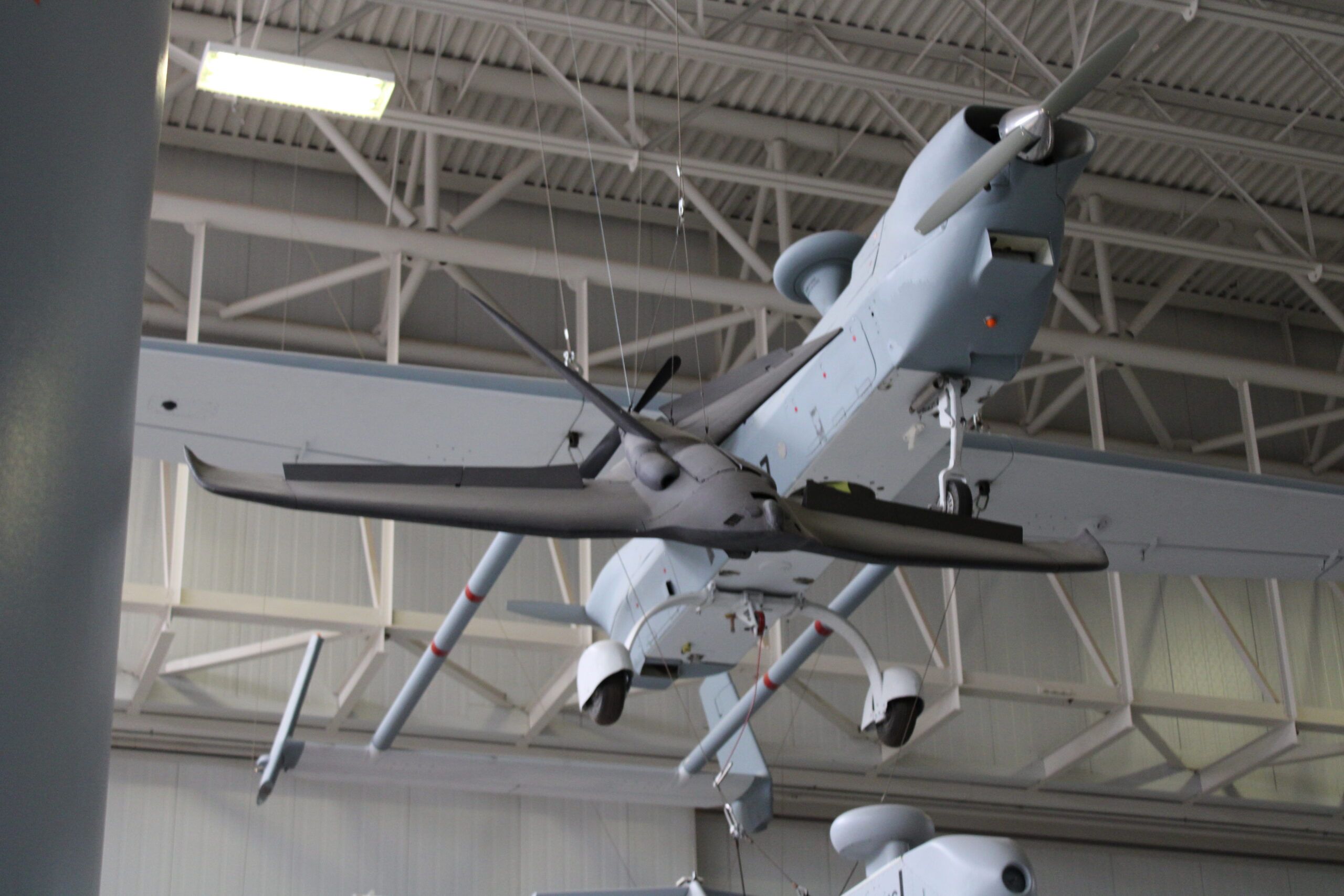McDonnell Douglas AQUILINE prototype (incorrectly identified as a “Mark II Batwing”) displayed inverted at the U.S. Army Aviation Museum. Credit: ZLEA / CC BY-SA 4.0 DEED.
From the dawn of aviation, aerial intelligence gathering platforms have been instrumental in the United States’ national security. Project AQUILINE was a secret program initiated by the Central Intelligence Agency (CIA) in the 1960s to develop an unmanned aerial reconnaissance vehicle. The project aimed to address the challenges of surveilling hostile territories during the Cold War.
The Need
In the early 1960s, traditional methods of surveillance faced significant challenges. The Lockheed U-2, a high-altitude reconnaissance aircraft, was vulnerable to Soviet surface-to-air missiles. The OXCART, another reconnaissance aircraft, was still under development and was expected to be susceptible to Soviet radars and missiles. Imaging satellites, while safe from interception, could not be quickly directed to provide coverage of a specific target.
Given these challenges, the CIA considered the use of small, unmanned aerial reconnaissance vehicles. These aircraft needed to have a very-low radar cross-section and small visual and acoustical signatures, allowing them to reconnoiter an area of interest without the target’s knowledge.

Development
In mid-1965, the CIA’s Office of Research and Development’s Applied Physics Division began work on the vehicle1. It would be about the size of a large bird and carry various payloads, including photographic equipment, nuclear sensors, and ELINT (electronic intelligence) recorders. A Special Projects Group was formed, and an RFP was sent out.
Douglas Aircraft, the only respondent, received a study contract on November 15, 1965. This was followed by two more contracts on November 21, 1966, and more in 1968 and 1969 for a “low-altitude intelligence-gathering system”. In 1969, the CIA signed a contract with the McDonnell Douglas Astronautics Corporation (MDAC) to begin developing technologies for the AQUILINE program.
The AQUILINE prototype was a powered glider with an 8.5-foot (2.6 m) wingspan, powered by a tail-mounted 3.5 horsepower (2.6 kW) McCulloch two-cycle chainsaw motor. It weighed 105 pounds (48 kg)1. It may have been made to resemble a large bird (aquiline means “eagle-like”).). The drone could reach speeds between 47 and 80 knots. It had an impressive endurance of 50 hours and could cover a distance of 1,200 miles. It could potentially reach a maximum altitude of 20,000 feet.

In addition, the CIA had plans to enhance the range by incorporating nuclear power. The proposed design included a radioisotope propulsion system that would convert waste heat from decaying isotopes, such as plutonium, into electricity. This type of engine, primarily developed for deep space probes, could potentially increase the drone’s endurance to an incredible 30 days or 36,000 miles.
Testing of the drone at Naval Air Weapons Station China Lake proved that it was difficult to see by the chase aircraft. This problem was only partially solved by painting the drone’s top surface bright orange. Because the drone had to be recovered by flying it into a net, there was almost always damage to its propellers, wings, etc. Three of the five prototypes were destroyed in testing.

Cancellation
Despite the successful demonstration of a 130-mile (210 km) range and very-high-resolution photography, meeting the 1967 specifications, the project was estimated to cost another $35 million USD and take two to three years to improve the aircraft into a practical long-range reconnaissance system. On the recommendation of CIA DDS&T (Deputy Directory for Science and Technology) Carl Duckett, the project was canceled on 1 November 1971.
Secrecy and Legacy
Most of what is known about AQUILINE was revealed in 2013 with the declassification of the 1992 Central Intelligence Agency and Overhead Reconnaissance: The U-2 and OXCART Programs, 1954–1974. After the project ended, all Project AQUILINE assets were stored at Area 51 (Groom Lake and Homey Airport) “semi-permanently”. One of the AQUILINE prototypes is now in the U.S. Army Aviation Museum. It’s unknown what became of the other program assets.
Project AQUILINE was an early example of the potential of unmanned aerial vehicles for surveillance and intelligence gathering. Its legacy can be seen in the drones and unmanned aerial vehicles used today for a variety of military and civilian applications.
Resource
Central Intelligence Agency
CIA.gov
*The views and opinions expressed on this website are solely those of the original authors and contributors. These views and opinions do not necessarily represent those of Spotter Up Magazine, the administrative staff, and/or any/all contributors to this site.

